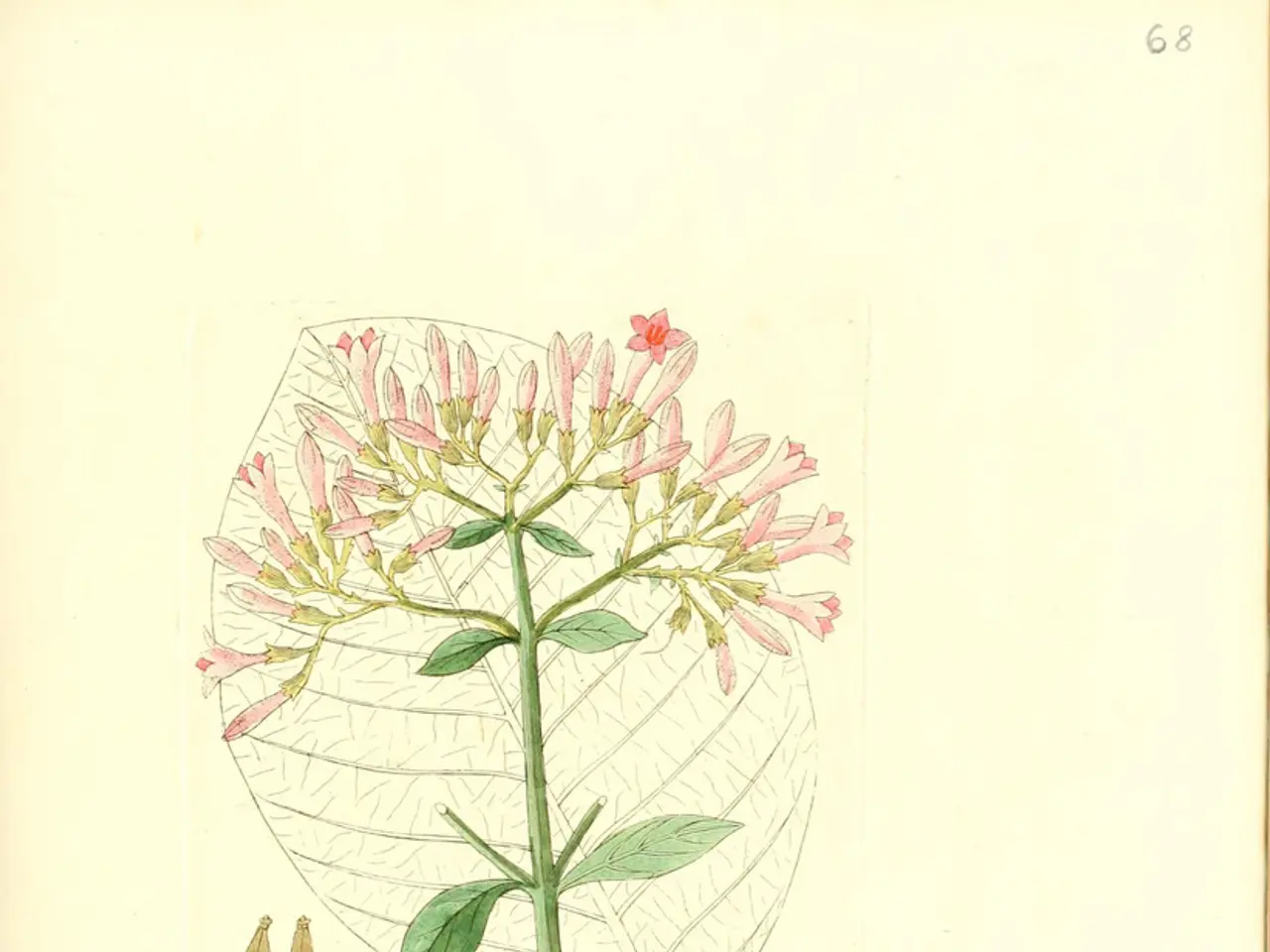Natural Patterns and Designs in the World
=====================================================================
In the intricate tapestry of the natural world, patterns are as essential as the colours and textures that make up the landscape. From the delicate symmetry of snowflakes to the spiralling arrangements of sunflower seeds, patterns are a fundamental aspect of our environment.
Snowflakes, for instance, exhibit perfect sixfold symmetry, a testament to the orderly dance of molecules as they form these icy gems. Meanwhile, spirals can be found in various forms, from the shells of molluscs and the flower heads of sunflowers to the swirling patterns of galaxies far, far away.
The number of spirals in a sunflower head follows the Fibonacci sequence, a mathematical phenomenon that has intrigued mathematicians and artists alike for centuries. This sequence, where each number is the sum of the two preceding ones (0, 1, 1, 2, 3, 5, 8, 13, and so on), is not only mathematically beautiful but also a remarkable example of the harmony between nature and mathematics.
Patterns are not limited to the natural world, though. They have been drawn, created, and rearranged by humans for thousands of years. Simple patterns have been introduced using Duplo bricks, while a more complex pattern was created by a 5-year-old using the same bricks. Even at the dinner table, patterns have been made, with a boy/girl pattern forming around it.
Patterns can also be observed in our kitchens, specifically in the foods we eat. A pattern was made with sweetcorn and peas on a plate, a simple yet visually appealing arrangement.
Beyond the commonly cited patterns like spirals and fractals, nature exhibits numerous other patterns such as symmetry (radial and bilateral), hexagonal tessellations, reaction-diffusion patterns, and wave-like ripples.
Radial symmetry is visible in starfish, flowers, and some sea creatures, while bilateral symmetry occurs in animals including humans. Hexagonal patterns are seen in honeycombs, snowflakes, and geological formations like the Giant’s Causeway. Reaction-diffusion patterns explain how spots and stripes form on animal skins through chemical interactions. Wave patterns, such as water ripples and sound waves, illustrate oscillatory patterns in nature.
Branching structures, like trees, ferns, rivers, and lung airways, show branching fractal patterns beyond simple fractals. These patterns, while complex, are crucial for the functioning of these systems.
The article you are reading has been last updated by Emma Vanstone on July 9, 2025. It is a testament to the ongoing fascination with patterns in nature and the continuous discovery of new and intricate patterns that make up our world.
References:
[1] Mandelbrot, B. B. (1982). The Fractal Geometry of Nature. W. H. Freeman.
[2] Tufte, E. R. (1983). The Visual Display of Quantitative Information. Graphics Press.
[3] Wilkins, J. (2006). The Pattern in the Dance: Mathematical Secrets in Nature's Motion. Copernicus Books.
[4] Salingaros, N. D. (2005). Principles of Urban Structure: Towards an Architecture of Life. Architectural Press.
- Children can learn about the intricate patterns observed in nature through engaging activities, such as creating their own Duplo brick patterns or arranging food like sweetcorn and peas on a plate.
- As part of a home-and-garden lifestyle, observing patterns in the natural world can be an educational and delightful activity for kids, enhancing their understanding of science and the beauty of nature.
- Besides the Fibonacci sequence in sunflowers, other patterns seen in nature include radial and bilateral symmetry, hexagonal tessellations, reaction-diffusion patterns, and wave-like ripples.
- In the realm of education-and-self-development, studying patterns in nature can foster a deeper appreciation for the harmony between nature and mathematics, as seen in examples like the Fibonacci sequence in sunflower arrangements.
- Over the years, scholars like Mandelbrot, Tufte, Wilkins, and Salingaros have dedicated their research to understanding the patterns found in nature, contributing to our ongoing understanding and fascination with the intricate tapestry of our natural world.




